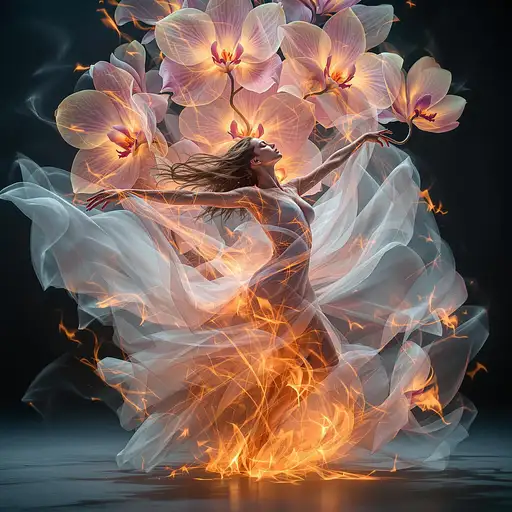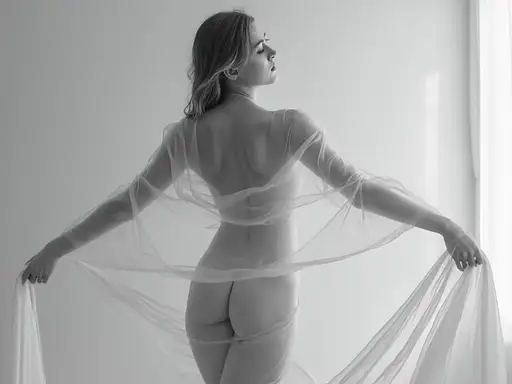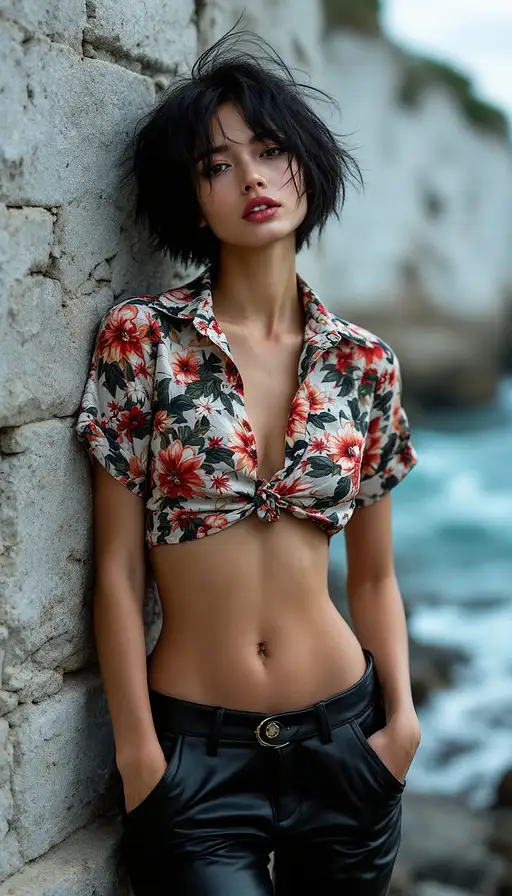
8 months ago
In the textured realism of Simon Stålenhag, a moon-worshiping priestess stands ankle-deep in the calm waters of a misty lake, her naked body fully exposed (2.0). Her raven-black hair flows wildly in the wind (1.8), adding a dynamic sense of motion as she raises her arms in worship toward the vast, star-filled sky. The night is illuminated solely by torches (1.8) planted in an irregular pattern along the sandy beach behind her, their golden flames flickering against the cool, muted tones of the environment. Her posture is powerful yet serene, the natural curves of her body, including her softly rounded bubble butt (2.0), highlighted by the warm glow of the torches. The contrast between the golden torchlight and the cool misty darkness of the lake creates a striking interplay of light and shadow, emphasizing the contours of her figure (1.9). To her side, a silver-grey horse (1.7) stands peacefully, tied to a nearby tree on the shoreline, its sleek coat reflecting faint glimmers of the torchlight. The lake is veiled in a thin layer of smoke (1.8), which drifts softly across the surface, blending with the hazy reflection of the torches in the rippling water. The air is alive with hundreds of fireflies (1.9), their tiny golden lights moving erratically, adding texture and depth to the scene. The torches' crackling flames mix with the gentle rustle of leaves and the faint hum of the fireflies, creating a richly immersive atmosphere. The volumetric lighting (1.8) from the torches filters through the drifting smoke, casting soft, dynamic beams across the scene. The muted earthy tones of the surroundings, interspersed with the vibrant glow of the torches and the flickering fireflies, evoke Stålenhag’s characteristic balance of realism and mysticism, capturing a moment of sacred ritual and haunting beauty.























